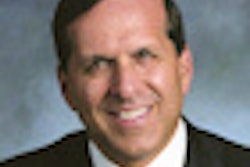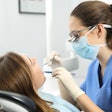
DrBicuspid.com is pleased to present the next installment of Leaders in Dentistry, a series of interviews with researchers, practitioners, and opinion leaders who are influencing the practice of dentistry.
William Kohn, DDS, former director of the division of oral health at the Centers for Disease Control and Prevention (CDC), joined Delta Dental Plans Association as its vice president of dental science and policy in February of this year. Prior to becoming director of the CDC Division of Oral Health, Dr. Kohn served as the division's director for science, where he was responsible for ensuring the scientific integrity of all division scientific and public documents, including the 2003 Guidelines for Infection Control in Dental Healthcare Settings, for which he was the lead author.
We talked with Dr. Kohn about the impact of healthcare reform on the provision of dental benefits, and what Delta Delta is doing to help address access-to-care issues in communities across the U.S.
DrBicuspid: What are your goals in your new role at Delta Dental?
 William Kohn, DDS, vice president of dental science and policy, Delta Dental Plans Association
William Kohn, DDS, vice president of dental science and policy, Delta Dental Plans AssociationDr. Kohn: In this role, I'm going to help to bring some strategic overlay on top of all the research conducted by Delta Dental member companies, and bring people together to utilize science to impact the programs and plans we put out in some kind of coordinated fashion.
Most of Delta Dental's science activities involve claims analysis, which is a health services research area. It involves parts of epidemiology, economics, statistics, and behavioral science research. You are looking at groups of people and various elements related to their health, and then you try and put different factors together in a meaningful fashion to determine what works and what doesn't. This is primarily what CDC does as well: collect and analyze data on a regional/national basis, and understand what it means and how it relates to the overall health of the population.
What impact will the healthcare reform act having on dental benefits?
Healthcare reform is very important for the dental benefits industry. The first critical thing is that Congress recognized the importance of children's health and is now requiring coverage for them, which is going to mean that millions more children -- around 5 million -- will have access to dental coverage. Parents and their children that are currently uninsured will be able to purchase children's dental benefits through the state health exchanges. The purchase will be subsidized for those that can't afford the benefit.
Dental insurance isn't like traditional medical coverage. Dental benefits are more predictable and defined and heavily focused on prevention and early diagnosis, which is great, particularly for children. So now Congress has recognized that health insurance and dental benefits are two separate things in the U.S. About 98% of people get their dental insurance separate from their medical insurance, and Congress recognized that dental benefits could be offered separately on these exchanges.
But we don't know yet what the pediatric dental benefit is going to be. The government is working on that this fall. So until they come up with some final regulations and definitions, it's going to be hard to predict exactly how the dental benefits industry will be impacted.
That said, we do believe that there are certain prevention strategies -- primarily involving fluorides dental sealants and early diagnosis -- are very important. Another important concept, particularly for children is, doing risk assessment. There is not a "one size fits all" prevention strategy in dentistry. For example, we have good national data showing that about 80% of new dental caries is in about 20% of the children population. So you've got a smaller group of kids at high risk of disease, and we know that they get the most benefit to more exposure to fluoride and getting sealants. Children at lower risk don't benefit as much.
The key is getting the right benefits at the right frequency to the right kids. That way we can provide benefits in most effective and economic fashion. These types of things are already being discussed and offered to some extent across various companies, but scientifically we think this is where things are going. The concept of risk assessment has been recognized by the ADA and the American Academy of Pediatric Dentistry, and both organizations have developed risk assessment tools for use by clinicians.
What is Delta Dental doing to address the access to care challenges so many individuals face?
Delta Dental is primarily a not-for-profit company, so many of our affiliate companies have charitable foundations. Delta Dental companies overall put about $48 million back into their communities in the last year, promoting oral health at the community level. They are helping to pay for scholarships for dental students, and they also offer student loan repayment plans. One good example is from Delta Dental of Iowa (DDIA) where recently the state Legislature committed funds to the DDIA FIND Project to form a true public/private/community coalition to help get dentists into high-need areas of Iowa. Delta Dental companies typically like to do things that affect their communities, and they support charitable dental clinics such as Missions of Mercy and the Special Olympics. They are always looking to give back to the communities.
Another example of positive community action is the funding of new or replacement water fluoridation equipment by some Delta Dental companies. Dental disease is relatively easy to prevent if people have access to the things that can help eliminate and prevent this disease. Water fluoridation, a benefit currently enjoyed by more than 170 million Americans, is one way of doing this, and a number of Delta Dental companies are offering to buy the water fluoridation equipment or replace aging equipment in communities that want to begin or continue fluoridating their water. With the terrible economy we've experienced in last few years, some communities have stopped fluoridating because they couldn't afford equipment or chemicals. So Delta Dental has stepped in in a number of communities to help them.
How can insurance companies make dental insurance more affordable for the uninsured?
It's not necessarily an issue of affordability. Most of medical insurance is designed to protect you against something catastrophic happening. And on the medical side, the expectation is that people aren't really going to use a big chunk of their benefits. But in dentistry, more than 90% of each premium dollar is paid out to the dentist or patient. So the expectation is that most of it is going to be used, and primarily for diagnosis and prevention. This means that a lot of the premium is already reflected in what the dentist is going to be charging and what employers are willing to provide.
Our challenge is to provide science-based plans that are both effective in preventing disease and cost-effective, so that people can get the most for their money. More than half of people access their benefits annually, but many don't, including some that really need regular dental care. An example is people with diabetes who are much more susceptible to developing periodontal (gum) disease. Before I left the CDC, we were looking at national data, and we found that people with diabetes are visiting the dentist less than those without. We'd like to see the exact opposite happening. A lot of Delta Dental companies are offering increased periodontal benefits to people with diabetes because we know there is such a strong relationship between periodontal health and diabetes. And yet people don't always take advantage of that.
So the challenge is to reach consumers and providers to make sure they understand what kinds of benefits are available and to make sure that they use them. There is a lot we know about preventing dental disease that people just don't apply. Much of the support we provide goes to oral health education and the importance of preventive care.
Earlier this year, Washington Dental Service [a Delta Dental member company] announced that it was going to cut reimbursement rates by 15%. Is this something we might begin to see in other Delta Dental regions?
Those are local decisions made based on what the conditions are in that locale or region, and it is really based upon the local competition and market conditions, as well as what dental benefit companies have to do to remain viable and provide what the employers are asking for. My understanding is that Washington spends about 94 cents on every dollar paying out premiums. Most of the money that comes in goes out in paying for services.
Washington has a tremendous history of community involvement as well. Most of what comes in that doesn't go out in service payments goes out into the community through a number of creative programs there. Washington Dental Service funds mobile dentistry, early learning "cavities-free" programs, and the ABCD program. This is a program in which medical doctors are trained to be able to give oral care checkups and to make sure that kids are getting the necessary oral care they need, especially at an early age. A lot of kids don't go for their first dental visit until they are older, but in the youngest age group, over the last decade, we have seen an increase in the presence of dental disease.



















